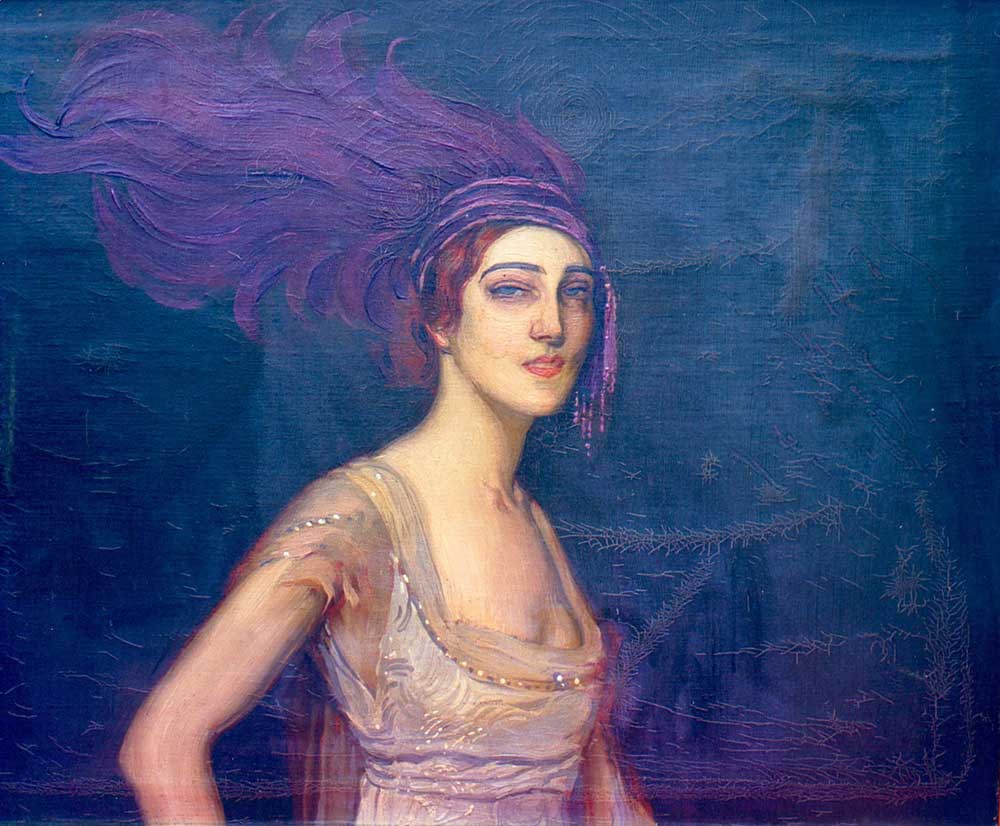Ida
Rubinstein
Antonio
de la Gandara - French portrait painter (1861-1917)
1913
Artist's
family collection
Oil on canvas
Size?
Jpg: Xavier
Mathieu
Ida Rubinstein
(1885-1960) was a
famous actress and dancer.
She was born in St.
Petersburg, but
had no formal training in ballet and was an amateur dancer; but because
of her wealth and her stunning beauty, she was lucky enough to buy her
way in the door and essentially became her own patron. As a result, and
when it was all said and done, she would play a significant role within
the Paris Opera scene.
She did briefly
study privately (in
the beginning) under Mikhail Fokine whom had choreographed her debut in
1909 for a private performance of Oscar Wilde's Salomé --
In the finale the Dance of the Seven Veils she was left totally
nude.
Because of her
great beauty Serge
Diaghilev took her in with the Ballets Russes and cast her in the title
role of Cléopâtre in his first Paris season (1909) and
then
as Zobeide in 1910.
After 1911 she left
the Russes. In
'28 she formed her own ballet company, which presented ballets by some
of the
greatest artists of the time; choreography by Nijinska,
Massine, Fokine, and Jooss; original scores by Ravel, Stravinsky,
Sauguet, Arthur Honegger, and others. The company disbanded 1935.
With her wealth she
commissioned
a number works and performed in many plays and dances for the Paris
Opera
and would become an important patron to new artists.
She died in 1960
(Rosina
Neginsky)
(Andros
on Ballet Home)
From: Xavier Mathieu
(xavier. mathieu@wanadoo.fr)
Date: Friday, October 22, 2004
Natasha bonjour,
I discovered this week
a letter dated Feb, 1914 and a French revue dated June 1913 which make
reference to the Ida Rubinstein portrait by La Gandara.
The portrait was
exhibited in Paris Salon in the spring of 1914, but it’s now evident
that the canevas was realised in the first two quarters of 1913.
All my best
Xavier
Note:
Special thanks to
Xavier Mathieu,
of France, a friend
of the JSS Gallery, for sending me the image and information.
|


